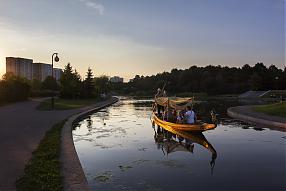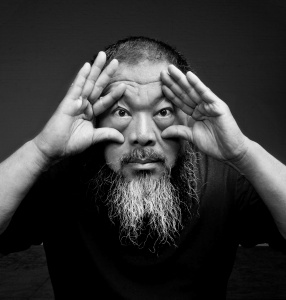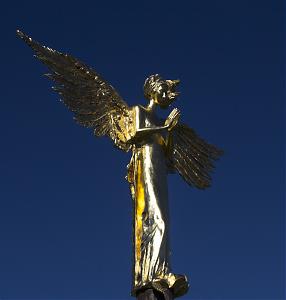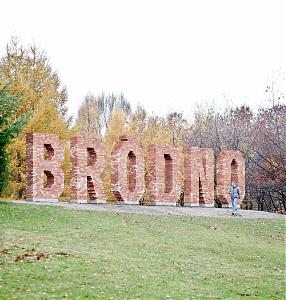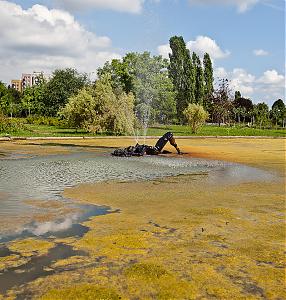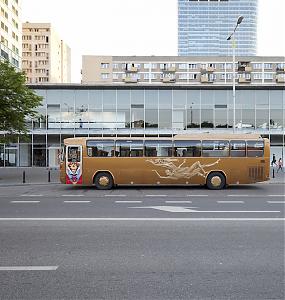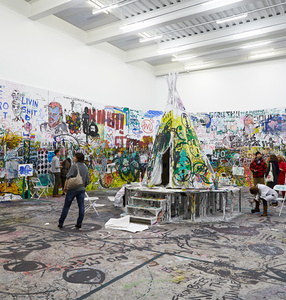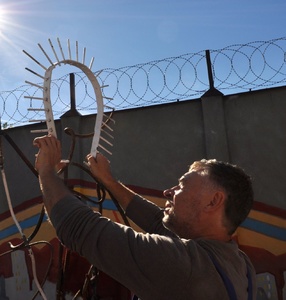Bródno Sculpture Park
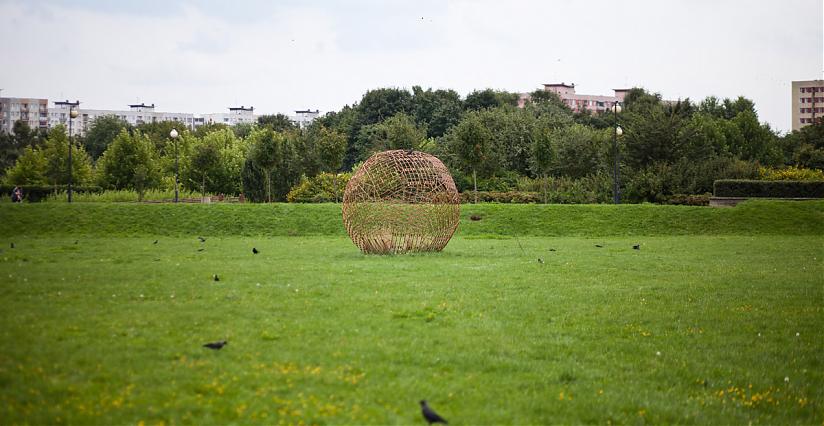
The Bródno Sculpture Park, inaugurated in June 2009, is intended to be a long-term project, involving artists, residents of Bródno district, city council officers and an art institution – the Museum of Modern Art in Warsaw. The park has very quickly become one of the most recognizable spaces for public art in this part of Europe.
This park, located in the residential estate of Bródno, a part of the district of Targówek, had not been frequented by art lovers before. Being a unique example of a local initiative, the park refers to various traditions of art being exhibited outside of galleries and museums. The park helps implement the formula of “social sculpture” and public art in general. Each of the works presented in the Bródno Sculpture Park has a different character, durability, style and level of “functionality.”
To this project contributed the following artists: Paweł Althamer, Youssouf Dara, Olafur Eliasson, Jens Haaning, the group Nowolipie, Susan Philipsz, Katarzyna Przezwańska, Monika Sosnowska, and Rirkrit Tiravanija.
The Garden of Eden
Paweł Althamer
The Garden of Eden is a sculpture-garden, which was created in cooperation with residents of Bródno district, among others with children from the Elementary School No. 285. Author of the design is Paweł Althamer, who was thinking about creating the green paradise for his neighbors. Paradise corner at the Bródnowski Park, which was designed jointly with the landscape architect, was created with diverse tree and shrub species, the most often selected based on "special features" of the plants. Each year, there are more and more plants, and this green corner changes its shape.
Sylwia
Paweł Althamer and Grupa Nowolipie
Sylwia is a result of cooperation of Paweł Althamer and Grupa Nowolipie – for over fifteen years, the artist has been running the ceramic workshops with the group of people suffering from sclerosis multiplex, for whom the art is a form of therapy and rehabilitation. Together with Paweł Althamer, the group created the park fountain in form of Sylwia – a woman with snakelike hair lying in the water. Each part of Chimera was designed by different member of the group. The sculpture, which is weighing four tons, was made of bronze and installed in the water reservoir at The Garden of Eden.
Toguna
Youssuf Dara and Paweł Althamer
Toguna is a design resulting from cooperation of Paweł Althamer with African sculptor, Youssuf Dara. It resulted from many years of Paweł Althamer fascination with culture of Dogon, African tribe living in south-central Mali in Western Africa. Paweł Althamer decided to invite Youssuf Dara to Warsaw with special mission – erection of „social architecture” based on African tradition. The most important place for Dogon tribe is toguna – wooden shelter with thick roof, supported with sculpted columns, in which men's assemblies and council meetings are held. Toguna, which was built in Bródno Park, is not only a potential place for social integration, but also may be a commonplace such as the bus stop.
Negative Glacier Kaleidoscope
Olafur Eliasson
Eliasson’s sculpture is a kaleidoscope weighing over 300 kilograms is a crack in the ground hacked out by a star falling from the sky. The subtle, backlit kaleidoscope interiors look the most impressive on a cloudy day at dusk. All the atmospheric phenomena like rain, snow or hail change the perception of this work. A representative of the most important Eliasson’s works, Negative Glacier Kaleidoscope refers not only to the natural phenomena but also to the issue of perception and technological inventions.
Bródno
Jens Haaning
Jens Haanings art is usually ephemeral, but this time the artist has created a massive sculptural installation made of bricks and cement: Bródno sign rising on a park hill. It is a commentary on the work, exercise, relationships between thought, language and material. In addition to the sculpture, the artist has also created a new logo for the district, which can be used free of charge by its inhabitants.
You Are Not Alone (Would the Earth Exist Without the Sun?)
Susan Philipsz
Susan Philipsz is mainly interested in sound, the projection of human voice and its relations with the architectural space. Her works are often accomplished outside of galleries or museums and presented in the context of various elements of architecture: bridges, ruins, underground passages, parks and cemeteries. A sound installation by Philipsz entitled You are not alone (Would the Earth Exist Without the Sun?) is her first “invisible” sculpture in the Bródnowski Park.
Untitled (Interventions)
Katarzyna Przezwańska
During summer of 2010, Katarzyna Przezwańska created more than ten painting interventions in Bródnowski Park, using the „natural” phenomena of this place, paying attention to use of building materials, as well as using found objects with sculptural properties. Abstract paintings of Przezwańska occur in relationship with cracks in pavements, paths made of concrete plates, defects in asphalt and existing park infrastructure: planters, water reservoirs, and benches. Paintings created in open air emphasize the park exotics within the center of the bleak apartment houses. Colors used by the artist are the most frequently inspired by the façades of the surrounding residential buildings, but also „strange” bright pinks or blues occur.
Grating
Monika Sosnowska
The sculpture by Monika Sosnowska evokes local Polish sculpture tradition in the public space (metalwork, welded structures in children’s playgrounds and gardens, etc), which reflects the artist’s interest in Modernist legacy, as well as construction faults, and amateurish and rank-and-file initiatives put forward by dwellers of housing estates where precast concrete construction dominates. Sosnowska’s sculpture is installed directly over the ground and takes a form of a ball “molded” from ornamentally shaped reinforced concrete bars. The sculpture is a result of observation of shapes and patterns found in gratings installed by dwellers of the Bródno district in Warsaw, which protect the first floor apartments, kiosks and stores against burglary.
Guardian Angel
Roman Stańczak
The Guardian Angel guards The Garden of Eden – planted in 2009 by Althamer with a help of his friends, of which the artist says: “If there is any Eden at all, here, among the blocks, then I carry it inside of me. It is my awakening and the Eden, which manifests itself in these trees, but also in the imperfections of all kind. Not only have apples been picked in this Eden, but benches have been ripped out and lanterns have been shattered! I thought that the rest should be told about the discovery immediately.”
The Guardian Angel performs the function of God’s messenger and representative. But Roman Stańczak warns us that what we desire might lead us to perdition. Human despair can contribute to the glory of the angel that leads mortals to heaven along a thorny road.
untitled (overturned teahouse with the coffee maker)
Rirkrit Tiravanija
The sculpture untitled (overturned teahouse with the coffee maker) is a pavilion to accommodate one or two persons, used as a shelter from rain or a place to enjoy a cup of tea or coffee. Made of cheap materials, the teahouse is a cube whose steel surface reflects surrounding grass and trees. This object was intended to attract neighbors to meet and use a piece of art creatively. In 2010, the original teahouse returned to Germany and was replaced by a copy designed by Paweł Althamer, where an improvised park café is often organized and run by nearby residents.
Paweł Althamer
One of Poland’s most famous artists worldwide. His work has contributed to redefining the concept of “social sculpture”. He employs a wide range of techniques and methods, working in figure sculpture, as well as social actions and performance. He is known for being uncompromising and loyal to his artistic vocation.
Youssouf Dara
A Dogon sculptor, the author of the Bródno toguna. Art plays an important role in the Dogon society: the people believe that with the artists’ magical skills, the Universe is kept alive. Once every sixty years, Sigui is organized – this is an eight-year long ceremony supposed to “renew the Cosmos”. The central figure in the ceremony is a few meters tall wooden structure called Mother of Masks. For each ceremony a new figure is produced by a tribal sculptor.
Olafur Eliasson
Born in 1967 in Copenhagen, Denmark, to Icelandic parents, Olafur Eliasson is one of the most recognized living artists in the world. He rose to fame thanks to the grand installation The Weather Project exhibited in 2003 at Tate Modern in London: the artists created a gigantic yellow sun, using a system of lamps and mirrors. In 2010, Eliasson won a competition to design an Art Pavilion to mark Poland’s 2011 EU presidency. At the junction of Karowa Street and Krakowskie Przedmieście Street a white and red structure called Your Reality Machine was located, which housed numerous cultural and political events.
Jens Haaning
Born in 1965, currently lives and works in Copenhagen. His works have been presented in such institutions as the Migros Museum in Zurich, the Ludwig Museum in Cologne, Institute for Contemporary Art in London, De Appel in Amsterdam and Secession in Vienna.
Susan Philipsz
Lives and works in Berlin. She is mainly interested in sound, human voice production and its relationship with the architectural space. Emotional and psychological influence of her music on her audience is also extremely important for her. Sound installations of Susan Philipsz are frequently created outside of the galleries and museums, in reference to various elements of architecture: bridges, ruins, underpasses, city parks and cemeteries. Her works were presented at many prestigious international exhibitions, i.e. Manifesta 3 in Ljubljana (2000) and 4th Berlin Biennale (2006). In 2010 she was awarded with the Turner Prize.
Katarzyna Przezwańska
A graduate from the Department of Painting at Academy of Fine Arts in Warsaw. Her work reflects her interest in modernism in general, modernist utopia and the avant-garde movements of the early 20th century. A crucial feature of her work is color and its perception with reference to spatial properties of architecture. Przezwańska’s artworks take a form of abstract, three-dimensional images, full of color inspired by the nearest urban surroundings.
Monika Sosnowska
One of the most widely recognised young-generation artists. She represented Poland at the 2007 Venice Biennale. Earlier, she participated in, among other events, Manifesta 4 in Frankfurt (2002) and the show Clandestine at the 51st Venice Biennale of Art (2003). In 2006, she had a solo show at the New York Museum of Modern Art, and in 2008 an exhibition at the prestigious Schaulager in Basel.
Roman Stańczak
Born in 1969 in Szczecin. He is a sculptor, living and creating his works in Wesoła, near Warsaw. In the early 90s, he combined the so-called ‘critical art’ (associated primarily with professor Grzegorz Kowalski’s art workshop at the Warsaw Academy of Fine Arts Sculpture Department, where he studied) with a spiritual quest. Ever since the end of 1996, he has been dealing with ... life.
Rirkrit Tiravanija
In his work, the Thai artist (born in 1961) focuses on creating situations, cooperations with a group, opportunities to break social barriers, making new contacts. At times, Tiravanija limits to preparing meals with the neighbors to the gallery where his work is presented. The artist’s projects have been realized at most prestigious institutions and exhibitions: Venice Biennale, Sao Paulo Biennale, etc. In 2004, he received the Hugo Boss Prize awarded by the Guggenheim Museum in New York.
